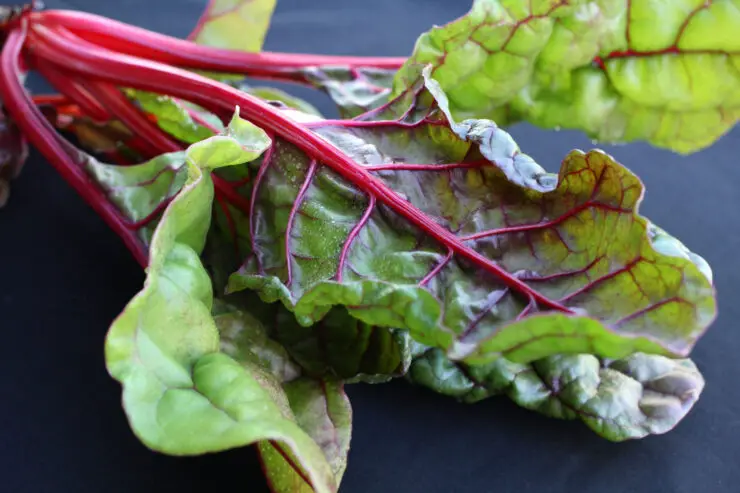As an Amazon Associate I earn from qualifying purchases. Please read the disclaimer for more info.
Whether you don’t have access to swiss chard or simply want a change from this sometimes bitter vegetable, we’ve got the answer: alternatives! In this post, we’ll discuss six of the best substitutes for swiss chard that can help you still get the health benefits without the stress of hunting down the chard.
From spinach to kale and substituting squash for stems – there’s something here for everyone who loves all things veggie!
Read on as we dive into some of our favorite recipes using these easy-to-find alternatives.
Overview of Swiss Chard and its Uses in Cooking
Swiss chard is a nutritious and versatile green that can be eaten raw or cooked as an ingredient in salads, soups, and other recipes.
It belongs to the same family as beets, spinach, and quinoa.
It is also known as silverbeet, seakale beet, and leaf beet.
Its leafy stalks are available in shades of red, yellow, and rainbow hues, while its thick stems range from white to red or yellow.
Swiss chard is known for having mild-tasting leaves with a slightly bitter flavour, making it regularly used in Mediterranean cooking.
It also can be used as a wrap for fillings like feta cheese, hummus or even boiled eggs.
Baked swiss chard becomes sweet and chewy when caramelized in olive oil with garlic or nuts – making it an excellent addition to any meal!
Mature Spinach
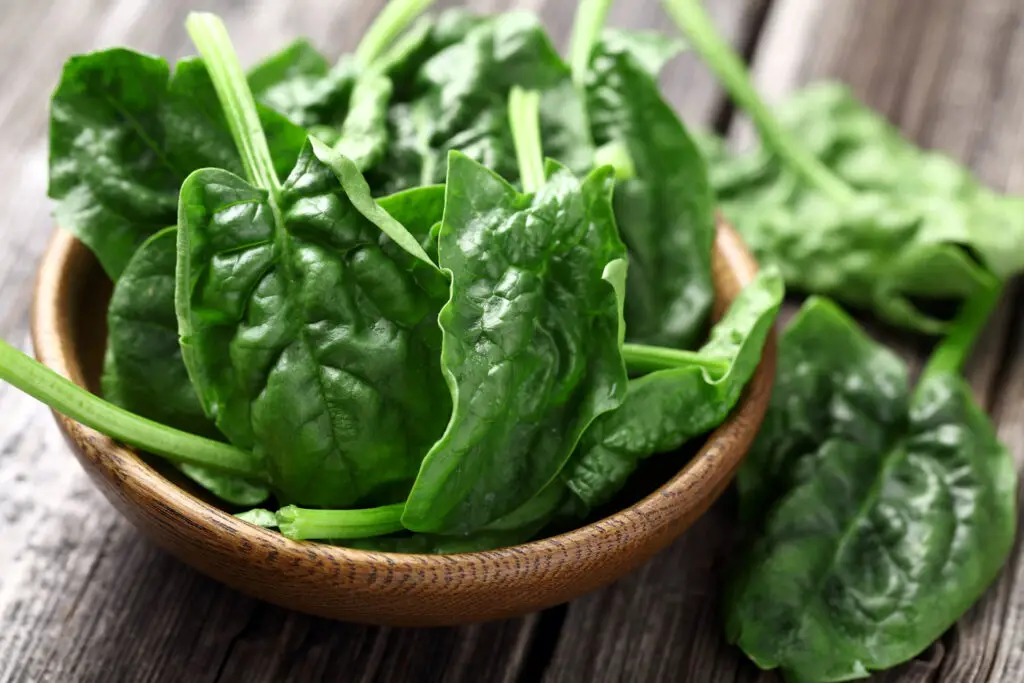
Mature Spinach (not baby spinach) is often considered an ideal swiss chard substitute in recipes due to its many similarities.
Its deep green leaves provide a visual comparison, and it shares many qualities that make swiss chard so popular in many dishes.
And although it doesn’t quite have the swiss chard taste, Spinach does have a coarser flavor and texture than swiss chard, but this can easily be compensated for by adding additional spices, herbs, or other ingredients.
Nutritional value
This delicious leafy green is also packed with essential vitamins and minerals. Spinach is high in vitamin K, making it a good choice for bone and heart health.
It’s also rich in vitamin A, helping to maintain strong eyesight. Additionally, spinach contains folate, iron, and manganese, furthering its nutritional profile.
Cooking with Spinach
Due to its texture when cooked, mature spinach makes an ideal sub for swiss chard in many recipes. And because it has a mild flavor compared to other dark leafy greens such as kale or collard greens, it blends easily into dishes without overpowering their taste.
To use spinach in dishes, start by washing the leaves thoroughly. Any dirt that remains on the spinach leaves can lead to an unenjoyable experience when consuming them.
Next, remove any stems attached to the leaves, as they tend to taste bitter. Always opt for fresh spinach over frozen and canned varieties for best results.
Once you have prepped your spinach of all dirt and remaining stems, it should be ready for whatever dish you choose to prepare with it!
Beet Greens
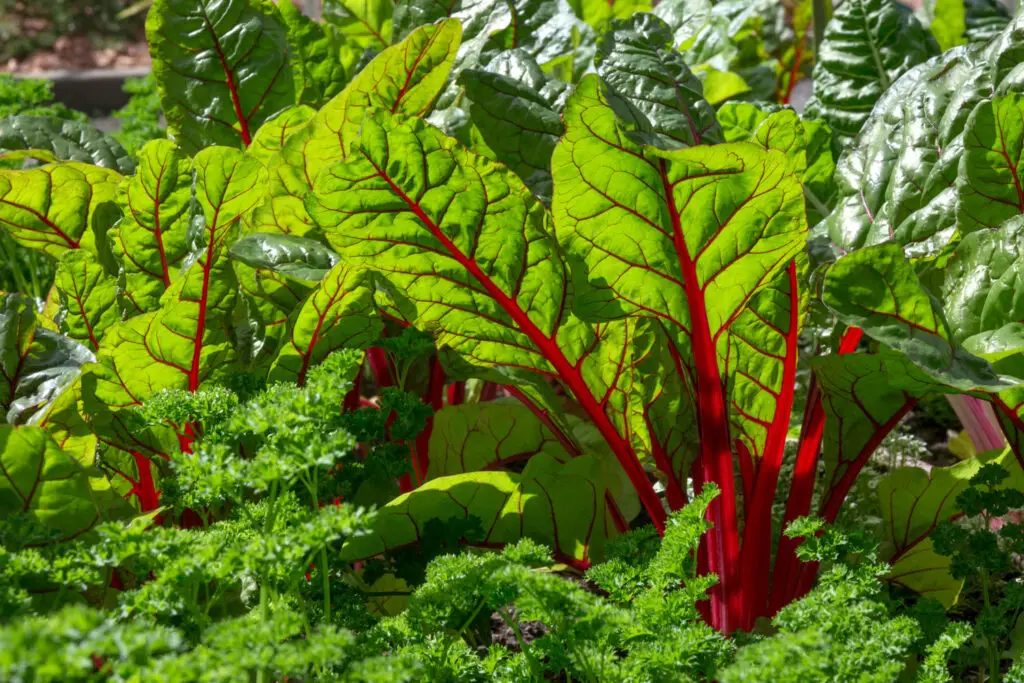
Beet greens can be a great substitute for swiss chard in many dishes. They have a similar mild, slightly sweet flavor and offer many of the same benefits associated with swiss chard.
Furthermore, beet greens are perfect for adding texture to soups or sautéed dishes while their earthy, creamy, nutty flavor stands up nicely to bold spices like cumin or chili flakes.
Whether you’re looking for a healthy ingredient to brighten up your weekday meals or add variety to salads, this vegetable can easily replace swiss chard.
Nutritional Value of Beet Greens
Beet greens are a nutrient-dense, leafy vegetable with numerous health benefits. They contain an array of minerals, vitamins, and antioxidants, making them an excellent source of dietary support.
Beet greens are high in fiber and can help lower bad cholesterol levels. Additionally, the presence of magnesium in beet greens can help with regulating blood pressure and cardiovascular function.
Cooking with Beet Greens
Beet greens are an incredibly versatile vegetable and can be cooked in a variety of interesting ways.
Roasting works well to bring out the natural sweetness of the greens.
Beet greens can also be sautéed with garlic and onions for extra flavor, or even thrown into pasta dishes for added nutrition. You could even make your own chips using beet greens – simply toss them with oil, salt, and spices, then bake in a 350-degree oven until crispy!
Kale
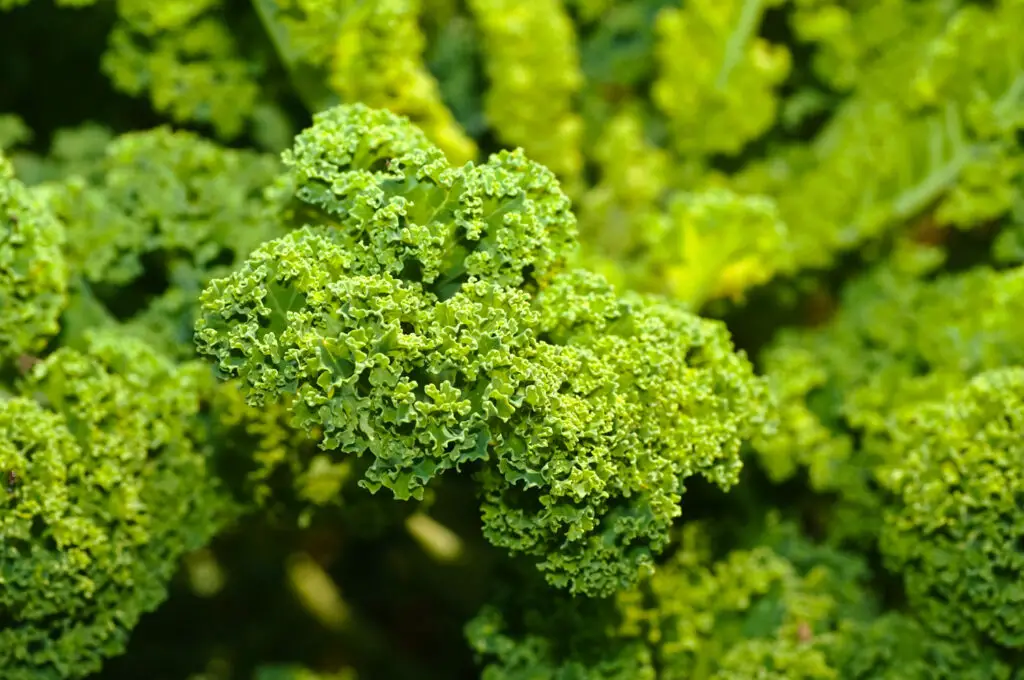
Kale is a dark, leafy green vegetable that is a nutritional powerhouse. It has a unique flavor and texture that make it a great substitute for swiss chard.
With its firm texture and slightly bitter taste, it lends a unique flavor to dishes like salads, soups, stir-fries, sandwiches, and more.
Nutritional Value of Kale
Kale is an incredibly nutritious vegetable. It contains substantial amounts of calcium, potassium, iron, magnesium, Vitamin C and Vitamin K.
The presence of both Vitamin A and folate make it an exceptional choice for maintaining healthy vision, as well as proper immune system functioning.
Additionally, kale’s fiber content can help with digestion and hormone regulation.
In short, replacing swiss chard with kale in any dish will ensure you get health benefits from your meal!
Cooking With Kale
Kale is a versatile and flavorful green that can easily substitute for swiss chard in many dishes.
To get the most out of it, start by discarding tough stems and rinsing the leaves before preparing.
When cooking kale, it is important to cook it quickly over high heat as this will prevent it from becoming tough and tasteless.
For more hearty dishes like soups or stews, use lacinato or dinosaur kale varieties (also known as black kale and Tuscan kale) which hold up better during long cooking periods.
Roasting is another great way to bring out kale’s flavor. Simply toss chopped pieces in olive oil, sea salt, and pepper, spread them onto a baking sheet, and roast in an oven at 375°F for 15-20 minutes until slightly crispy.
Related: 9 Creative Substitutes for Asparagus
Collard Greens
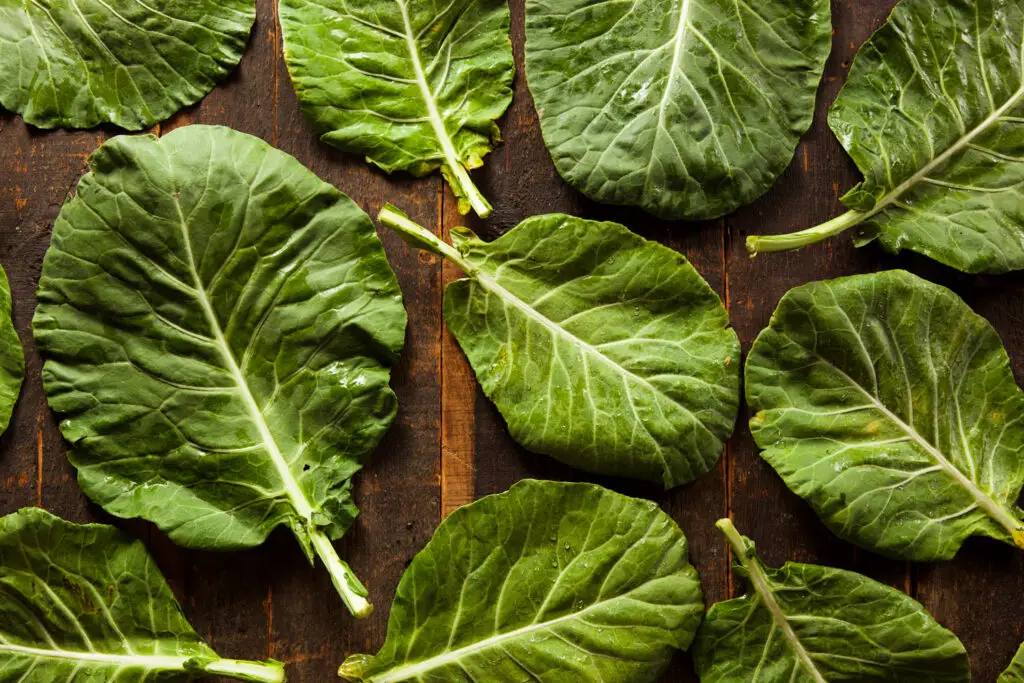
Collard greens are a leafy green vegetable with a flavor reminiscent of a combination of cabbage and kale.
When shopping for collards, look for vibrant green leaves with no discoloration or yellowing spots; this will produce the softest textures in cooked dishes.
While collard greens don’t mimic the flavor of swiss chard as closely as some of the other substitutes, they can still provide the necessary texture and balance to various recipes.
Remember that collards have tough stems that take longer to soften than swiss chard, so plan your cooking times appropriately!
Nutritional value of Collard Greens
Collard greens are similar to swiss chard in appearance, and like swiss chard, they come from the same plant family.
Nutritionally, they are an excellent source of vitamins A, C, and K and folate, manganese, and fiber.
They also contain many antioxidants that help fight inflammation and protect against conditions such as heart disease, diabetes, and cancer.
Additionally, they provide dietary calcium for bone strength and growth, magnesium for overall health, zinc for a healthy immune system, iron for healthy oxygen transport throughout the body and potassium to maintain fluid balance.
Cooking with Collard Greens
One of the best swiss chard substitutes is collard greens. Collard greens are a tasty addition to many dishes, but they must be prepared correctly to keep their texture and bring out a beautiful nutty flavor.
To prepare collard greens for cooking, rinse them off with cold water and dry them with a paper towel.
Cut the tough middle stems from each leaf, then roll the leaves into cigar-shaped pieces and slice them into thin strips.
Once sliced, collard greens can be added to sautés or boiled in stews or soups – creating a delicious and nutritious meal!
Related: Best Substitutes for Galangal to Spice up Your Life
Bok Choy
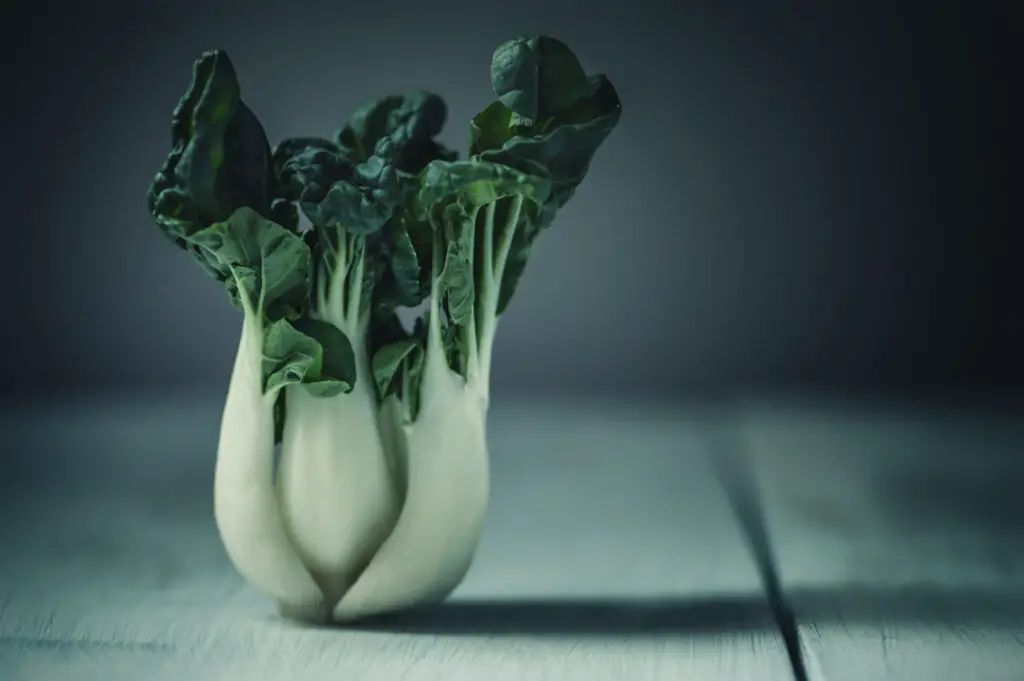
Bok choy is an excellent swiss chard replacement substitute in any recipe that calls for it – and it comes with various benefits.
It has a much more delicate flavor than swiss chard and can be prepared more quickly.
Compared to swiss chard, bok choy contains fewer calories and much less sodium, making it a healthier choice for those watching their diets. Also, the texture of cooked bok choy (even when stir-fried) is far more tender than that of the tougher swiss chard leaves.
Nutritional Value of Bok Choy
Bok choy is a nutrient-rich leafy vegetable packed with essential vitamins, minerals and dietary fiber.
It contains high amounts of vitamins A and C, which both support immune system health and numerous other benefits, such as aiding in vision, skin maintenance, cell growth, and more.
Additionally, bok choy provides generous doses of vitamin K to help keep the bones strong and healthy.
Cooking with Bok Choy
To make sure your bok choy comes out perfectly cooked, it’s important to separate the leaves from the stem; each requires different cooking times. Begin by washing the bok choy and cutting off the bottom of the stem. Then, discard any wilted or discolored leaves.
From there, you have two options – slice up the whole piece of bok choy, leaves, and all; or cut off the leaves and separate them from the stems before slicing.
If you’re looking for distinctive textures in your dish, go with option two – cook the stems a bit longer than the leaves, and they will be nice and tender while retaining some crunch.
Related: Best Alternatives to Broccoli Rabe for your Leafy Dish
Mustard Greens
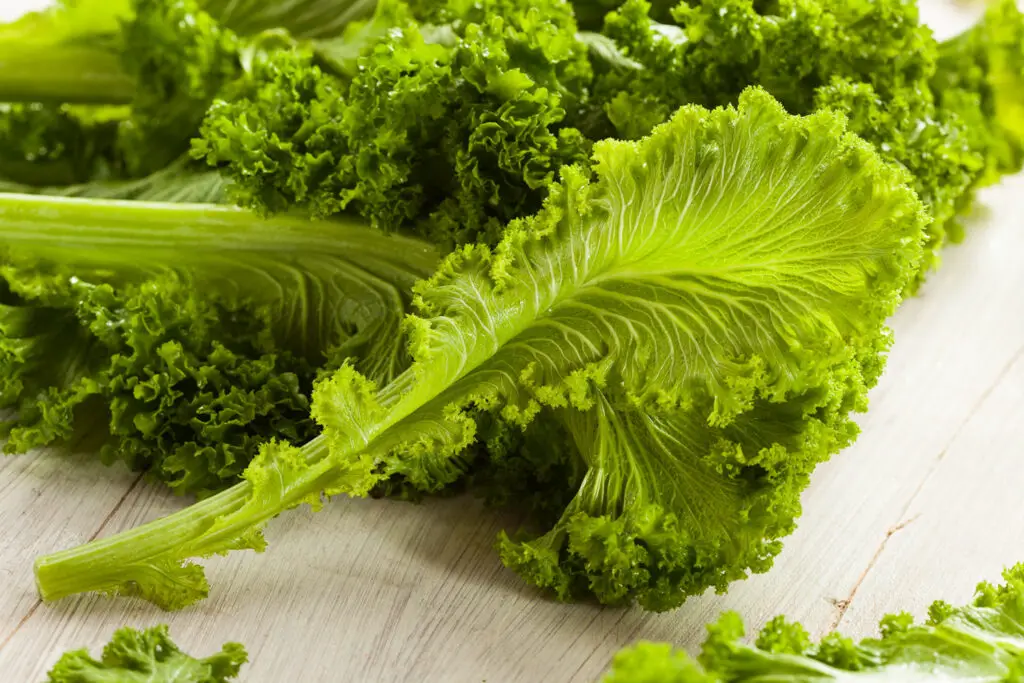
Mustard greens offer a slightly astringent and peppery flavor, well-suited to meals often enjoyed with a spicy kick.
These can be steamed or boiled to unlock their sweet and pungent flavors.
Roasted in the oven with your favorite seasonings, the mustard green is the perfect substitute for any recipe calling for Swiss Chard.
Nutritional Value of Mustard Greens
The nutritional value of mustard greens is unmatched. Low in calories but packed with Vitamins A, C, K, and B6, they are sure to give any meal a considerable boost.
Not only are they rich in antioxidants, but they also contain dietary fiber that promotes better digestion and helps your overall health.
With their peppery flavor adding an extra kick to any dish, these leafy greens provide a spicy substitute for swiss chard.
Cooking with Mustard Greens
These robust, peppery leaves are both low-calorie and high-fiber, making them an excellent choice for a healthy side dish.
To properly prepare mustard greens for your dish, thoroughly wash the leaves in cold water and dry them with paper towels. Next, remove the stems from each leaf, as these can be tough and fibrous after cooking.
After the stems are removed, stack several leaves together on top of each other and roll them into a log shape; then, thinly slice them into strips.
Last, add to your dish the desired ingredients, such as olive oil, lemon juice, or garlic – depending on how you plan to flavor the final dish.
Related: 7 Burrata Cheese Substitutes
Summary Best Substitutes for Swiss Chard
Although swiss chard, or rainbow chard, is a highly nutritious, leafy green vegetable, it can be hard to find or prepare.
Thankfully, when needing to substitute swiss chard, several best swiss chard substitutes can give you all the flavor and nutrition you need in your dishes.
For example, collards, kale, and mature spinach are all excellent replacements for soul food dishes; beet greens add beautiful color to roasted veggies; cabbage is ideal for homemade soups; and wild chervil adds a hint of sweetness to whatever it’s added to.
So when you can’t get your hands on swiss chard, feel free to use any of these substitutes for Swiss chard – your swiss chard recipes will still come out tasting delicious!
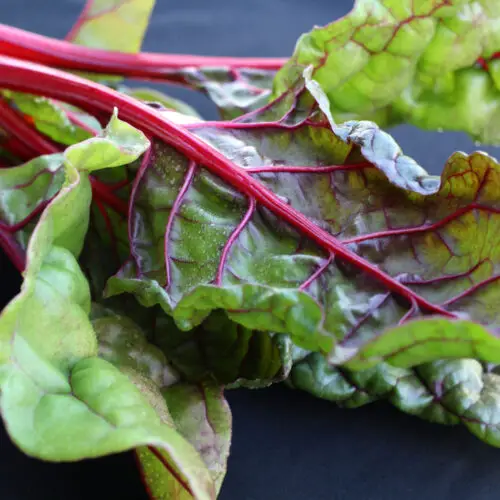
6 Vegetal Substitutes for Swiss Chard
Ingredients
- Mature Spinach
- Beet Greens
- Kale
- Collard Greens
- Bok Choy
- Mustard Greens
Instructions
- Decide on the type of substitute for Swiss chard you need based on texture and flavor.Pick the best fit from the above list of substitutes.Add to the recipe the proportions required to match the flavor and texture of the Swiss chard.

